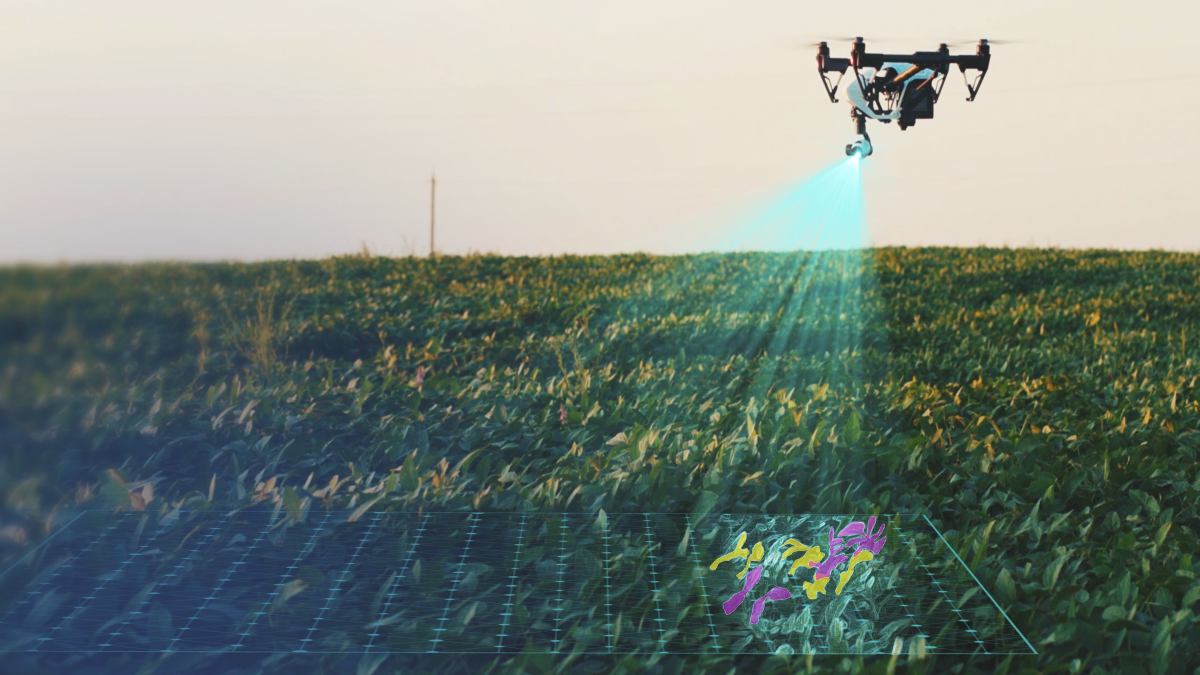Data Annotation for Computer Vision Helps Power Next-Gen AI Agriculture Products
Nowadays, farmers are dealing with more pressure than ever before since the demand for food is growing as the population increases and land is taken by urbanization. This means that companies in the agriculture industry need to operate in new and adapted ways in order to make a profit.
Emerging technology falls under the banner of AI farming, which offers today’s farmers that possibility as farmers face unprecedented challenges when trying to pass the agricultural way of life to future generations. As a result, farmers’ profits are dwindling. Local farms, including some in the world’s most fertile lands, are on the decline. Consequently, building a viable business has become more challenging, and the farmers need to find ways to work smarter and not just harder. In this article, we will take a look at how AI can benefit farmers and what types of data annotation are needed to create modern AI agriculture products.
Computer Vision-Powered Drones for Monitoring Crop Growth

Modern irrigation practices, livestock technology, fertilizer management, and various other tools have allowed farmers to improve different operations. But when it comes to crop production and growth monitoring, drones have established themselves as the best solution for farmers. The drones are equipped with computer vision systems and cameras that allow them to fly over every part of the field that needs to be inspected and take images. So once the crops have been planted and started to grow, farmers implement this technology and give a certain flight path based on the area they want to survey.
The images provided by the drones can be used to improve crop, soil, and fertilization management to identify healthy growing crops from the ones that need attention. This allows farmers to be proactive rather than reactive when the problem is already visible and damaging. The ability to be proactive is due to computer vision-powered drones that make the crop monitoring process fast and effective.
Weed-Detecting and Removing Robots

Weed detection and removal is a mundane but important task. The reason for this is that weeds compete with the crop for space, soil moisture, plant nutrients, and solar energy. Chemical herbicides can kill pesky plants, but they can also contaminate water and affect soil health. Weeds can be pulled out by hand, but it’s unpleasant work. Technological advances in computers and sensors have contributed to the use of automation in agriculture machinery, especially for weeding machines. With AI-powered automation, the weeding process is controlled electronically, which reduces human intervention and optimizes the power provided by the machine.
AI-powered robots roam the farmland and identify weeds using computer vision to scan the ground while An onboard computer, powered by AI, identifies weeds, and the robot’s carbon dioxide lasers then zap and kill the plants. One cutting-edge robot can eliminate more than 100,000 weeds per hour and weed 15 to 20 acres of crops in one day.
What Types of Data Annotation are Needed to Create AI Agriculture Products?
In both examples mentioned above, we talked about how these technologies use computer vision to complete their respective tasks. There are several different types of data annotation needed to train computer vision systems. Bounding box annotation is needed to help the system learn to detect objects and estimate their location within a frame. This can be various types of plants, weeds, and anything else the system needs to detect.
More detailed types of annotation, such as semantic segmentation, will also be necessary since it delineates boundaries between similar objects and labels them under the same identification. This method is used when you want to understand the presence, location, and sometimes, the size and shape of objects. You would use semantic segmentation when you want objects to be grouped, and it is typically reserved for objects you don’t need to count or track across multiple images because the annotation may not reveal size or shape.
Trust Mindy Support With All of Your Data Annotation Needs
Mindy Support is a global company for data annotation and business process outsourcing, trusted by Fortune 500 and GAFAM companies. With more than 11 years of experience under our belt and offices and representatives in Cyprus, Ukraine, Poland, India, Philippines, Egypt and other countries, Mindy Support’s team now stands strong with 2000+ professionals helping companies with their most advanced data annotation challenges.





